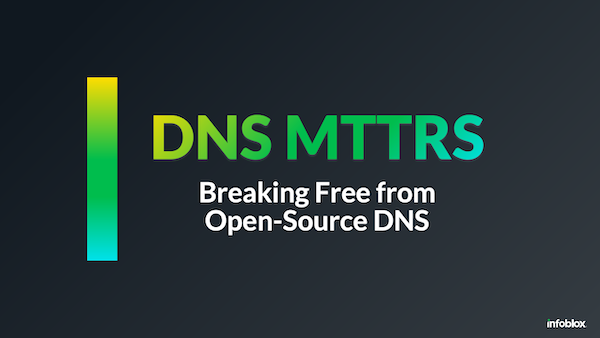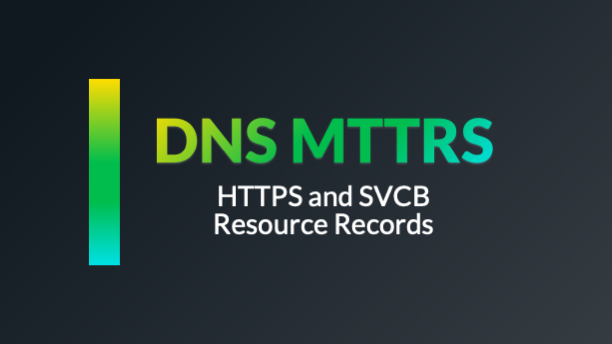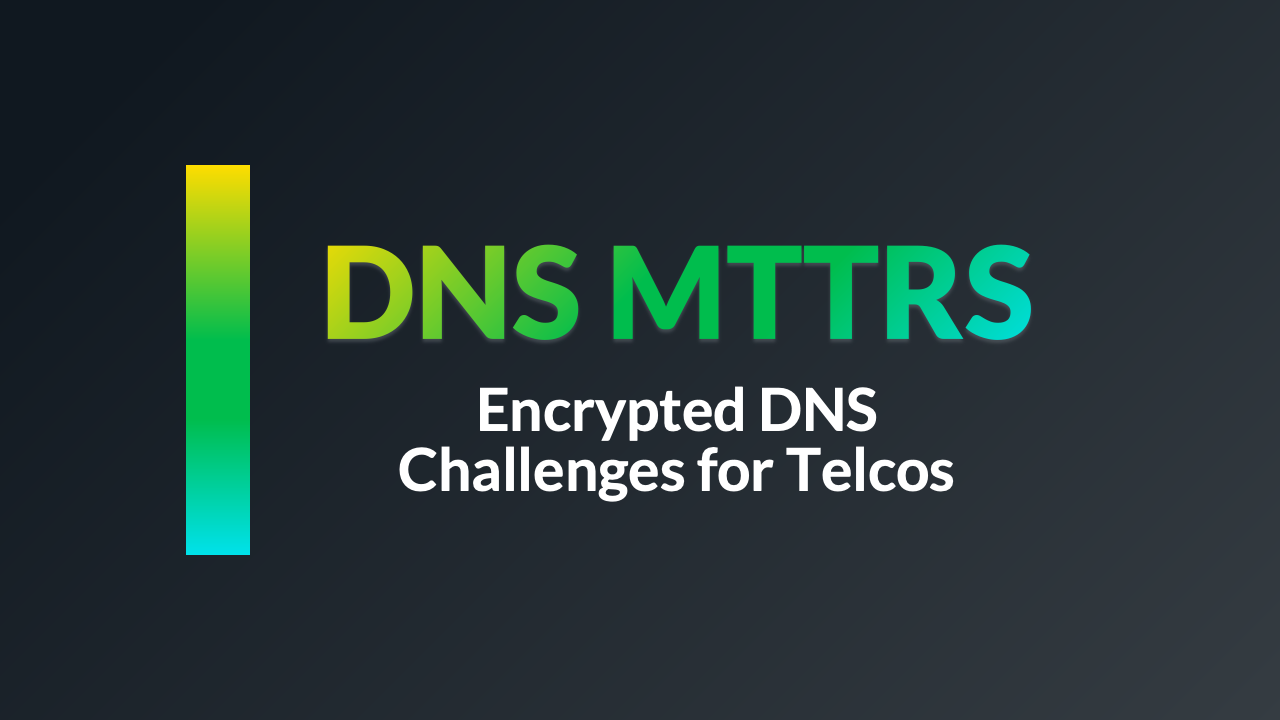In the digital era, where cyber threats loom large and data breaches are commonplace, Protective DNS (PDNS) emerges as a beacon of security. It’s not just a tool; it’s a commitment to digital safety, a sophisticated guard standing watch over the vast landscape of the internet. PDNS doesn’t just block the bad; it actively analyzes and responds, turning the Domain Name System (DNS) protocol—a foundational element of the web—into a dynamic shield against the onslaught of cyber risks.
For broadband operators, the call to action is clear and present. Your networks are the highways of the digital world, and with PDNS, you have the power to make these highways safer for every traveler. By adopting PDNS, you’re not just offering a service but upholding a promise of integrity and security. This is your opportunity to lead the charge in the battle for a secure internet, to be the vanguard that sets the standard for safety in our connected world.
Let’s dig into the essence of PDNS and explore why it’s not just an option but a necessity for broadband operators committed to safeguarding their users’ digital journeys.
The Iceberg Beneath
Underneath the surface of widely reported cyber incidents, there’s a vast, chilling expanse of digital threats that are often overlooked. The high-profile breaches are the tip of the iceberg, with businesses facing a daily deluge of ransomware attacks. This is the harsh reality of the escalating cybersecurity landscape, underscoring the urgent need for strong security measures like PDNS.
In the labyrinth of our digital world, the threat landscape is not static; it’s a relentless storm of evolving dangers. The battle against these threats is not just about defense; it’s about dismantling the deceptive paths that lead to our digital doors. It’s about erecting an impenetrable shield to protect users from the shadows that seek to exploit every click and keystroke.
In this context, the risks are manifold:
- Lookalike Domains (Typo squatting): Crafty replicas of legitimate sites that prey on the slip of a finger, leading to data theft or malware infections.
- Data Exfiltration over DNS: A stealthy heist where data is siphoned through DNS queries, slipping past the guards unnoticed.
- Domain Generation Algorithms (DGAs): A malware maestro’s tool, conjuring a cacophony of domains for covert communication, eluding the grasp of security systems.
- Malware via DNS Response: A trojan’s whisper, embedding malicious code within DNS responses, infiltrating networks under the guise of routine traffic.
A Call to Arms
In the shadow of a potential $10.5 trillion annual drain on the global economy by 2025 due to cybercrime, governments worldwide are focusing on DNS security. This isn’t just about financial repercussions; it’s about maintaining the very fabric of global economic stability. A recent survey revealed that 86% of government agencies are bracing for the cyberattack surge, and the imperative for strong cybersecurity defenses has never been more pronounced.
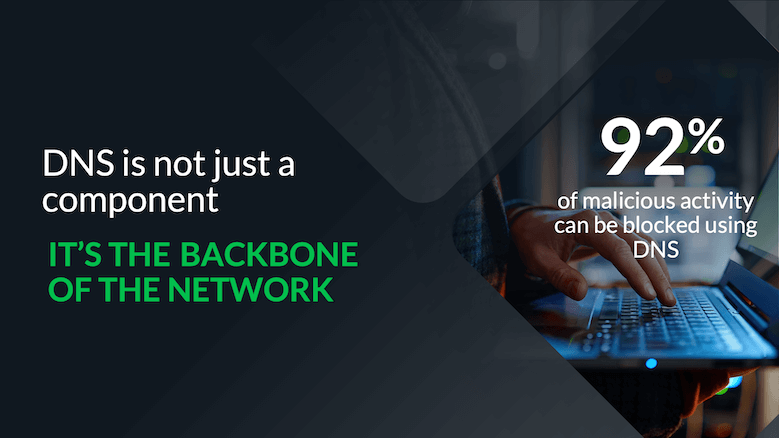
Governments are now championing innovative DNS-level solutions to combat these threats. These solutions offer proactive threat detection by integrating threat feeds and analytics, setting a new standard in cybersecurity measures. Here’s how they’re changing the game:
- Real-time Monitoring: Keeping a vigilant eye on DNS traffic to spot anomalies as they arise.
- Intelligence Sharing: Fostering a collaborative environment where threat data is exchanged freely among allies.
- Advanced Analytics: Harnessing the power of AI and machine learning for a predictive edge in threat analysis.
- Policy Enforcement: Applying stringent controls on DNS requests ensures only legitimate traffic flows through.
Some noteworthy examples:
- The Cybersecurity and Infrastructure Security Agency (CISA) has pioneered the Automated Indicator Sharing (AIS) ecosystem in the United States, enabling real-time cyber threat data exchange between public and private sectors. This initiative has significantly reduced cyberattacks and provided liability protection to participants.
Also, the Biden administration issued an executive order to enhance federal cybersecurity, advocating for a Zero Trust Architecture, secure cloud services, multifactor authentication, and encryption. It also emphasized the importance of public-private collaboration and established a Cyber Safety Review Board to analyze cyber incidents.
- The National Cyber Security Centre (NCSC) has led the implementation of PDNS services in the United Kingdom. Since its launch in 2017, it has successfully protected government departments, emergency services, the NHS, and the Ministry of Defence. This is a testament to the effectiveness of PDNS and a compelling reason for other countries to adopt it. The NCSC recommends that private industries adopt commercial PDNS services to strengthen their digital infrastructure. The UK’s PDNS initiative serves as a model for nations, employing DNS Response Policy Zones (RPZ) to proactively defend against cyber threats and maintain the integrity of digital services.
These efforts underscore an increasingly global commitment to DNS security, a testament to its critical role in safeguarding our interconnected world. It’s not just a call to action for you as a broadband operator but for all stakeholders to unite in fortifying our digital defenses against tomorrow’s cyber threats. By adopting PDNS, you’re protecting your network and contributing to a global movement towards enhanced cybersecurity.
So, What Is Protective DNS?
Think of DNS (Domain Name System) not just as a network part but as the unsung hero that keeps the digital world spinning. It’s the essential directory that turns user-friendly domain names into the IP addresses computers need to connect. Imagine navigating the city without street signs; that’s the Internet without DNS. DNS is the star player in the DDI trio (DNS, DHCP, and IPAM). It works with DHCP (Dynamic Host Configuration Protocol) and IPAM (IP Address Management) to make sure every device, service, and user can connect seamlessly. It’s the universal glue that holds the network together, ensuring everything clicks into place.
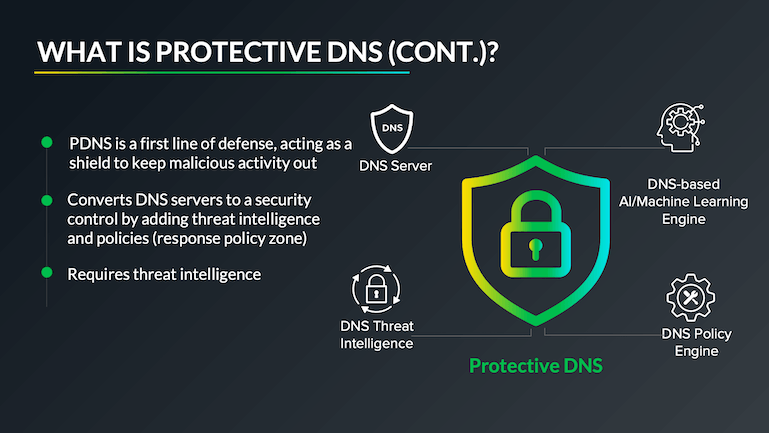
Here’s why DNS matters:
- Universal Connectivity: DNS serves as the first hop from an end host before any action—whether accessing a website, emailing or using an application. It’s closest to all endpoints, including laptops, mobile phones, printers, and IoT devices.
- Historical Insights: DNS maintains information on which users/devices access specific resources. This historical data is valuable for tracking and troubleshooting.
- Threat Intelligence Integration: Organizations enhance security by incorporating threat intelligence into DNS infrastructure. This involves cross-referencing domains with a threat database. If a domain is flagged as malicious, DNS can block or redirect requests, preventing access to harmful destinations.
Now, let’s focus on Protective DNS. It adds an intelligent layer of security to DNS, safeguarding networks against threats. PDNS is not just a security service that builds on the traditional DNS. It’s an enhanced security layer that takes a proactive stance, focusing on security over standard DNS’s translation of domain names into IP addresses. With PDNS, you can feel confident in your network’s ability to fend off threats before they even reach your doorstep. In fact, 92% of malicious activity can be blocked using DNS.
- Real-Time Evaluation: PDNS evaluates DNS queries in real time using threat intelligence. It uses a policy-based resolver to prevent access to domains associated with malicious activities.
- Malicious Domain Prevention: Protective DNS proactively blocks the connection if a request matches a known or potentially suspicious malicious domain or IP address.
Why Broadband Operators Can Excel at PDNS Services
Broadband operators are not just service providers but the architects of our digital world. Their unique position makes them natural leaders in adopting and providing Protective DNS (PDNS) services. Here’s an in-depth look at why they are poised for this role:
Unmatched Infrastructure and Expertise
With vast networks at their disposal, including fiber-optic cables, cell towers, and data centers, broadband operators have the infrastructure that forms the backbone of our digital communications. Their data centers, housing critical DNS servers, ensure that web addresses are translated into IP addresses with low latency and high availability. The skilled professionals maintaining these services guarantee robustness, even during peak usage.
Global Reach, Local Impact
The extensive reach of telecom companies, serving millions across various geographies, allows for efficient DNS resolution in every corner of the globe. From the heart of bustling cities to the quiet of remote villages, their redundant systems and load-balancing techniques make sure DNS responses are optimized, providing continuous service without fail.
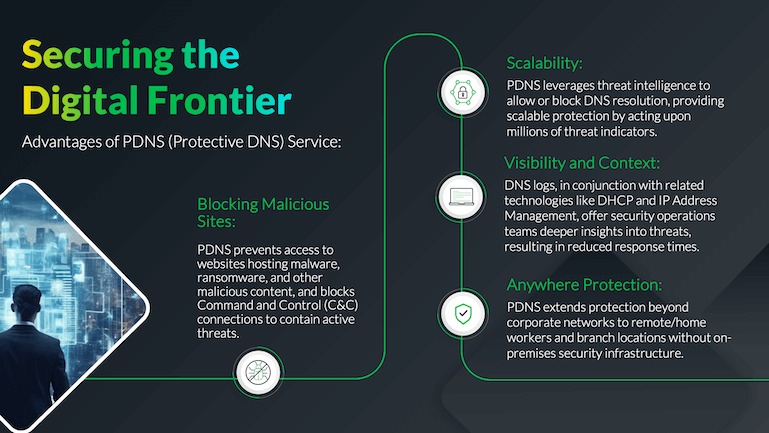
Building on Established Relationships
Longstanding relationships with businesses, governments, and individuals give broadband operators a significant advantage. These connections help with the adoption of PDNS and amplify the trust placed in their services. When a telecom company endorses PDNS, it’s seen as a reliable and secure recommendation from a trusted source.
A Foundation of Compliance and Trust
Broadband operators are already well-versed in navigating the complex landscape of data privacy, security, and communication regulations. PDNS fits seamlessly into their existing framework of obligations, enhancing compliance and, by extension, the trust customers place in them. This proactive approach to security helps avoid potential penalties and reinforces their reputation as safe and reliable service providers.
Champions of Securing Digital Communication
Recognizing their central role in the digital ecosystem, broadband operators have a vested interest in bolstering PDNS. By enhancing security measures, they play an important part in safeguarding digital communication and maintaining the integrity of online interactions.
Embracing PDNS: Elevating Your Edge in the Broadband Market
Standing out in the fiercely competitive broadband market is critical to capturing and keeping customers. Protective DNS (PDNS) services are not just a technological advancement but a strategic asset that can propel your business to the forefront. Here are five reasons why adopting PDNS can be a game-changer for broadband operators:
- Cultivating Trust Through Strong Customer Relationships
Broadband operators have the unique advantage of pre-existing customer relationships. Introducing PDNS as a value-added service can significantly enhance these bonds. By focusing on your customers’ security, you’re not just offering a service; you’re providing peace of mind, fostering deeper loyalty and satisfaction.
- Uninterrupted Service with Network Ownership
Your control over extensive network infrastructures, including the critical DNS layers, positions you to offer unparalleled reliability. Integrating PDNS into this framework means users can trust in a consistent, secure online experience, even during peak times—reinforcing their confidence in your brand.
- Leveraging Brand Reputation for Secure Solutions
A strong brand reputation is a powerful tool. When you, as a trusted broadband operator, advocate for PDNS, it resonates with customers as a testament to its reliability. Use your brand’s influence to champion PDNS adoption and set a new standard in customer care.
- Meeting the Security Demands of Modern Customers
In an era where digital threats loom large, security is not just a preference—it’s a necessity. PDNS addresses the growing concerns of individuals and organizations, positioning broadband operators as the defenders against cyber threats and the providers of choice for those who value security.
- Exceeding Expectations with Regulatory Compliance
While adhering to mandated security measures is essential, going above and beyond can set you apart. Offering PDNS proactively, even in regions where it’s not yet required, showcases your commitment to user safety and positions you as a leader, not just a follower, in the industry.
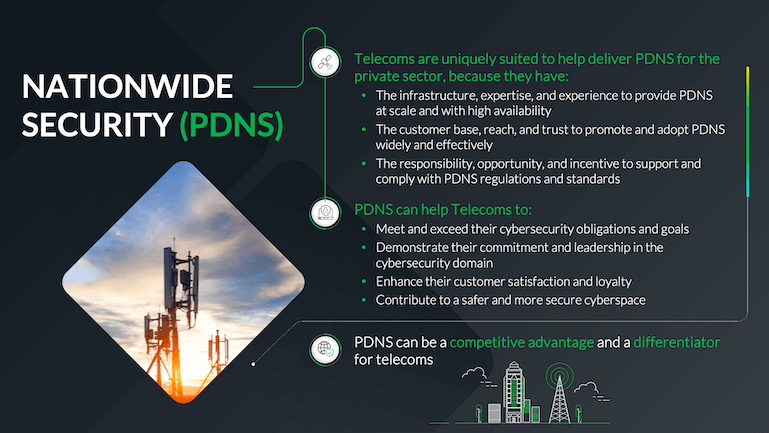
Conclusion
In conclusion, let us not forget that every DNS query presents an opportunity—a chance to block an adversary, to shield a user, and to fortify our shared digital future. Let’s reflect on the critical points that underscore the importance of our collective cybersecurity efforts:
The Urgency of Our Times reminds us that cybercrime is an ever-present threat, lurking in the shadows of our digital lives. Broadband operators, you are the sentinels in this ongoing battle, equipped with the tools and technology to defend and protect.
DNS: More Than Meets the Eye—this isn’t just a system; it’s the very fabric of our online existence. Every click, every connection, every digital exchange relies on the robust framework of DNS. It’s the silent force that powers our online interactions, often unnoticed but always essential.
Harnessing the Power of DNS means reimagining our approach to cybersecurity. With Protective DNS, we have the power to preemptively strike against cyber threats. By scrutinizing domain requests in real-time, we can shut down avenues of attack before they’re exploited, safeguarding data and preserving the sanctity of our digital space.
Telecoms: Champions of PDNS—broadband operators, your role cannot be overstated. You are the gatekeepers of a safer internet, the pioneers leading the charge towards a secure digital frontier. Your networks are the bulwark against the onslaught of cyber risks, and with PDNS, you fortify that defense.
Embracing the full potential of PDNS is more than a technical upgrade; it’s a commitment to resilience, to innovation, and to the security of our global community. Together, let’s harness the power of PDNS and forge a resilient digital ecosystem, one query at a time!
Learn More
Want to learn more? Watch our recent webinar titled Advancing Telecommunications Security: Protective DNS. Also, you can download this solution note that speaks to how Infoblox provides Protective DNS.






